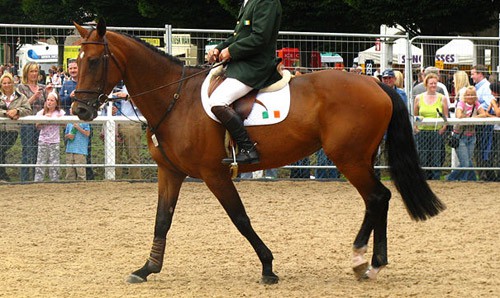Type the name of the breed you're looking for below
[wpdreams_ajaxsearchlite] Don't see the breed your're looking for? Click here and let us know!
Belgian Warmblood horse
| Country Of Origin | Belgium |
| History and Background | Horse breeders in the Netherlands, Germany, and France had been producing elegant saddle horses for hundreds of years. However, because the Belgian government was concerned about protecting the bloodlines of the Brabant (Belgian draft horse), it wasn't until the 1950s that breeders in Belgium were allowed to breed lighter saddle horses. The foundation stock of the Belgian Warmblood included jumping horses from France and the Netherlands, as well as Hanoverians and Holsteiners from Germany. Through studbook selection, Belgian breeders were able to direct breeding towards their own goals. The first stallion show for riding horses in Belgium took place, illegally, in 1953; the BWP was founded in 1955. Without native riding horses or all-purpose heavy warmbloods, Belgian breeders had to import stallions and mares. Over the course of 50 years, the BWP accrued a mare base of over 3,500 broodmares and produced a significant number of international-quality show jumpers. In 2010, the BWP was ranked 4th in the FEI/WBFSH International Show Jumping standings, below only the KWPN-Dutch Warmblood, Selle Francais and Holsteiner studbooks. |
| Use Today | Show horses, Pleasure horses, Eventing horses, Sport horse, Competition horse |
| Height | 15 - 17 hands |
| Colour | Any colour |
| Characteristics | As a warmblood horse, the Belgian Warmblood is characterized not by uniformity of coat colour, appearance or pedigree chart, but by uniformity of purpose. Like other warmbloods, Belgian Warmblood breeding horses are subjected to rigorous studbook selection. The most reliable way to positively identify a Belgian Warmblood is by the brand on the left thigh. Belgian Warmblood foals receive this brand during their foal inspection, when they are given a passport and deemed free of obvious defects. Between the ages of three and four years old, Belgian Warmblood stallions are presented to a jury in a "Hengstenkeuring" or stallion licensing test. The licensing test consists of a veterinary inspection, subjective evaluation of the stallion's conformation and jumping ability without a rider, and evaluation of the stallion's qualities under saddle. Stallions that do not achieve the desired marks in the licensing test are not eligible for the studbook. To retain status in the studbook, stallions must participate in competitions for young show jumping horses called the "Classic Cycle." Mares take part in similar conformational evaluations, however judgement of a mare's qualities as a riding horse are elective. The published breeding aim for the Belgian Warmblood reads as follows: "A noble modern and correctly-built warmblood horse with a rectangular frame, big outlines and good basic paces. The horse should be pleasant to ride and have an unobjectionable character, so that it can be used by any rider, both as pleasure horse and as a performance horse on national and international level. There has to be a balance between conformation, performance and health." Belgian Warmbloods range in size and substance, but the ideal size for a stallion is between 16 and 17 hands high at the withers. Mares are not eligible for breeding rights unless they exceed 15.1 hands high. In type, the Belgian Warmblood is similar to the Holsteiner, Selle Francais, Dutch Warmblood, and Hanoverian, and less like the Trakehner. The BWP does not hold any regulations barring horses of certain coat colours; however, the most common coat colours are chestnut ("vos"), bay ("bruin"), brown ("zwartbruin"), black ("zwart"), and grey ("schimmel"). The modifier "donker" means a dark shade, "licht" means light. Modifiers on "schimmel" often indicate the horse's color at birth, for example "bruinschimmel" means a grey born bay. There are also tobiano patterned pinto ("bont") Belgian Warmbloods, though they are uncommon. Belgian Warmbloods present a unique case in that there is no indigenous warmblood mare base. Of the 181 approved stallions listed, half were themselves Belgian Warmbloods. The remaining half were primarily Holsteiners, Selle Francais, Dutch Warmblood, or Hanoverian; there were a handful of Oldenburg, Thoroughbred, Westphalian, Belgian Sport Horse and Rhinelander stallions as well. Of the Belgian stallions, about a quarter had a Belgian sire. Another quarter had a Selle Francais sire, while a further 42% had Dutch, Holsteiner, or Hanoverian sires. The remaining sires were Westphalian, Rhinelander, Swedish, Belgian Sport Horse, Oldenburg, or Thoroughbred. |
| Personality and Temperament | Highly athletic and strong Intelligent and willing to learn Strong personality |



